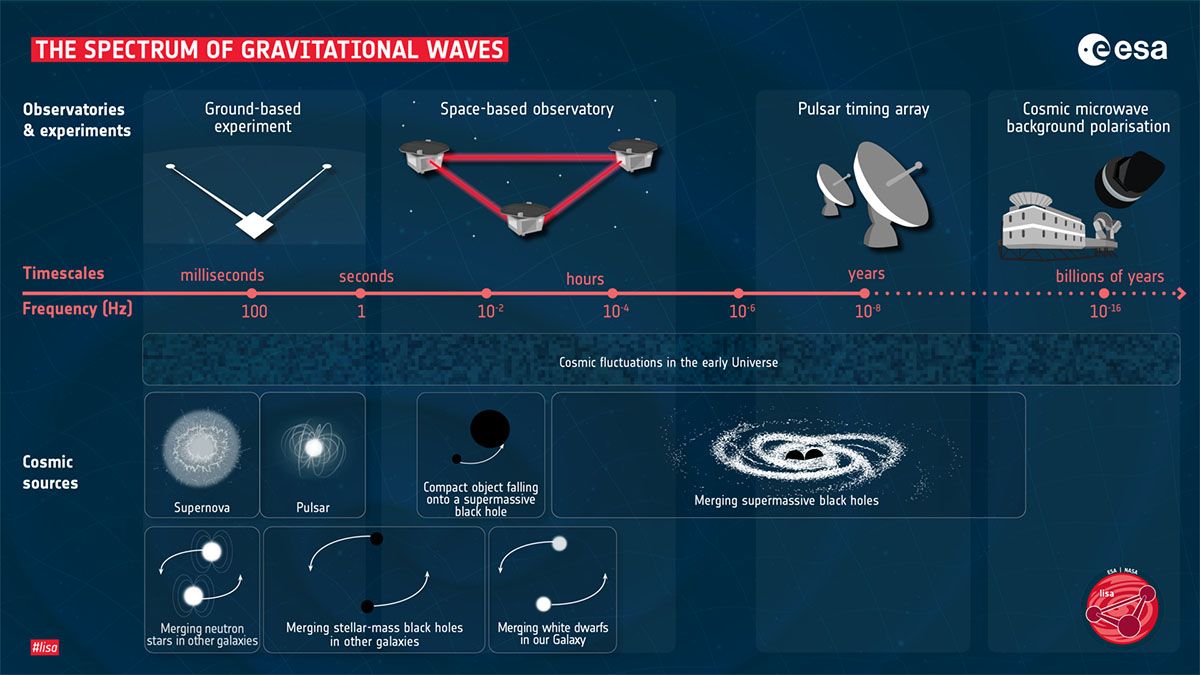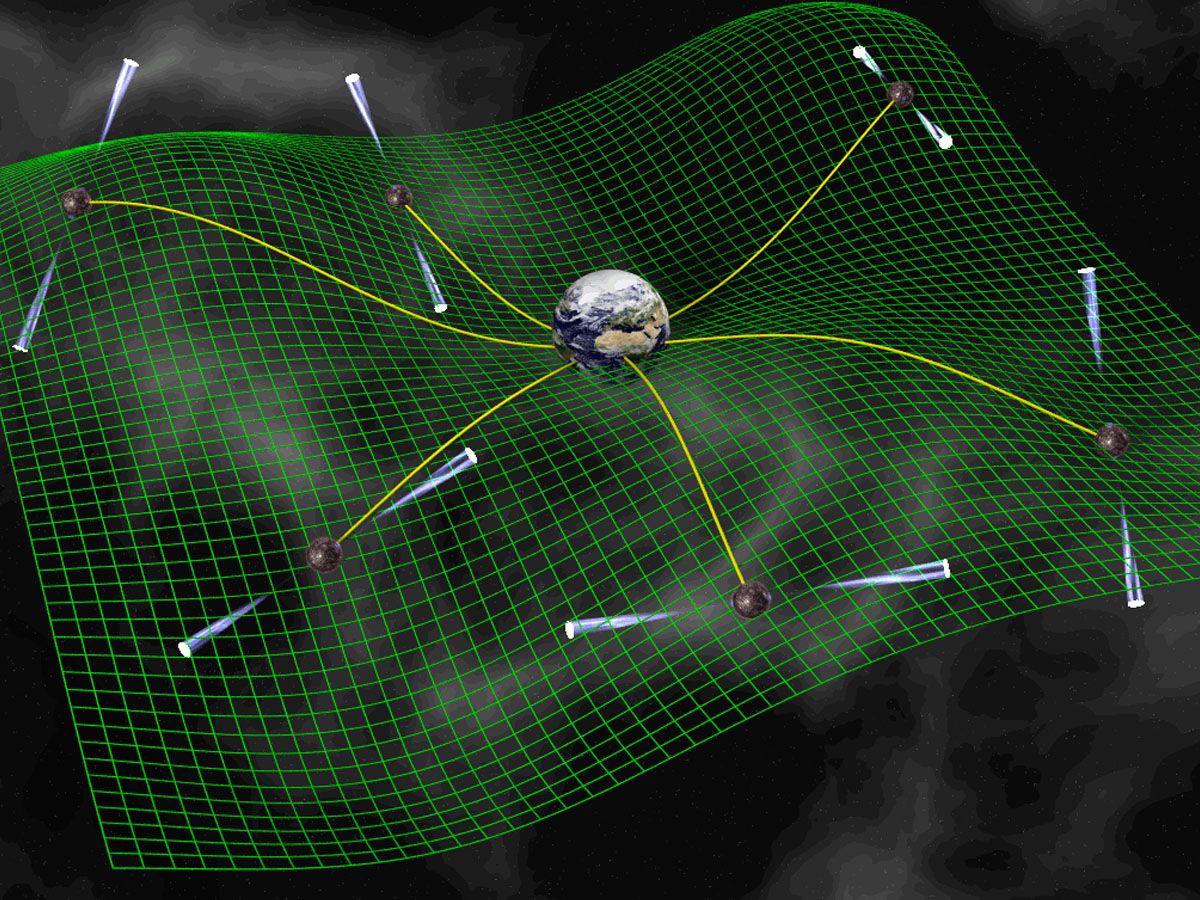What if the universe was humming a tune that we couldn't hear until now? That's right, a hum so faint and unique could only come from the cosmos. Scientists have just begun to hear this mysterious hum, and they believe it's the sound of 'monster' gravitational waves.
These waves are unlike anything we've detected before. They originate from pairs of supermassive black holes in distant galaxies, which are much larger than previously studied black holes, and their waves are thousands of times stronger and longer.
Their impact is so profound that they're causing our planet Earth to jiggle!
Einstein's Theory and the Confirmation of Gravitational Waves
Gravitational waves, as a concept, are not new. They were first predicted by the great physicist Albert Einstein in 1916 as a part of his groundbreaking Theory of General Relativity.
Einstein suggested that massive objects in the universe, like stars or black holes, can bend and stretch the fabric of space and time around them. When these objects move or change, they send out ripples in space-time, much like when a stone is thrown into a pond. These ripples are what we call gravitational waves.
But, it took almost a century for Einstein's prediction to be confirmed. The first detection of gravitational waves was in 2015. These waves were produced by the collision of two black holes, and their discovery opened a brand new window into the universe.
Since then, gravitational wave detectors on Earth have spotted nearly 100 events related to the mergers of black holes and neutron stars.
Understanding the Gravitational Wave Spectrum
Just like light waves, gravitational waves also have a spectrum, which is a range of different wavelengths or frequencies.
This spectrum of gravitational waves is vast, extending from high-frequency waves produced by smaller celestial events to low-frequency waves generated by massive phenomena, like the mergers of supermassive black holes.

However, Earth can only detect high-frequency gravitational waves due to its limited size. We need something much bigger for the low-frequency waves, which are caused by much larger cosmic events. The size of our entire galaxy, in fact!
And that's where the idea of using pulsars, the ultra-precise clocks of the cosmos, comes in. But how do these pulsars help us detect the low-frequency waves? And what have they revealed?
Role of Pulsars as Galactic Lighthouses
Pulsars are fast-spinning dead stars emitting radiation beams, much like lighthouses in space. These beams flash with such regularity that they can be used as precise cosmic clocks.
Astronomers have formed a galaxy-sized antenna by studying a network of these pulsars across the Milky Way. The steady and rhythmic flashes of these pulsars allow astronomers to track minute changes in their timing.
Imagine a still pond with ripples moving across it. If you had a bunch of corks floating on this pond, the ripples would cause these corks to bob up and down slightly.

Similarly, as gravitational waves pass through space, they cause tiny fluctuations in the arrival times of pulses from pulsars. These waves stretch and compress space-time itself, leading to very slight, but detectable, variations in the timing of pulsar flashes.
By studying a bunch of pulsars, what astronomers call a pulsar timing array, they can spot this unique pattern and confirm the presence of gravitational wave signals from supermassive black hole binaries.
However, gathering this evidence isn't quick or easy. It involves collecting data from various radio telescopes over long periods, sometimes up to 18 years!
Detection of Gravitational Wave Background for the First Time
So, what does all this careful and patient studying of pulsars tell us? Well, it has allowed us to tune into a whole new frequency of the universe's song, the ultra-low-frequency gravitational-wave spectrum.
This monumental achievement marks the first-ever detection of the gravitational wave background.
The gravitational wave background is like a faint echo of gravitational waves, persistent and ever-present. It is believed to be made up of waves originating from colossal cosmic events, such as the mergers of supermassive black holes, and even events from just after the Big Bang.
Yale's Chiara Mingarelli discusses the recent discovery of a “background” of gravitational waves — ripples in the fabric of space-time — detected from Earth in a field of low-frequency energy.
— Yale University (@Yale) June 29, 2023
Read more from Yale News: https://t.co/FRKeC61DbK #Yale @Dr_CMingarelli @NANOGrav pic.twitter.com/6TCJCdk3O0
Scientists worldwide have described this background as a "low-pitch hum" of cosmic ripples flowing throughout our Milky Way galaxy.
The detected signals from this background provide us with strong evidence that the waves are emerging from pairs of supermassive black holes. These black holes are thousands of times larger than the ones previously studied. Their intense gravitational interaction produces these monster gravitational waves.
Further, the hum of gravitational waves in the background suggests that there might be hundreds of thousands, or even millions, of supermassive black holes ready to merge in the future.
Observations from the Three Collaborative Studies
According to The North American Nanohertz Observatory for Gravitational Waves (NANOGrav), a consortium of astronomers, recent research has identified a distinctive pattern in the arrival times of pulses from a group of approximately 70 millisecond pulsars in our Milky Way galaxy.
This pattern serves as the "critical evidence" revealing the source of the signals as supermassive black holes.
The overlapping gravitational wave signals emitted by black hole binaries create a continuous hum that is analogous to numerous voices blending in a crowd. This hum becomes embedded in the pulsar timing data, facilitating the identification of the supermassive black holes.
To extract this pattern, scientists observed the beams emitted by pairs of pulsars, which resemble the rotating beams of a lighthouse.
Thank you to all our international #ipta colleagues! @EPTAGW @InPTA_GW @ARC_OzGRav @CSIRO_ATNF pic.twitter.com/M3hQfQGfOe
— NANOGrav PFC (@NANOGrav) June 29, 2023
They utilized a range of radio telescopes, including the Arecibo Observatory in Puerto Rico (which has since collapsed), the Green Bank Observatory in West Virginia, the Karl G. Jansky Very Large Array in New Mexico, and the Canadian Hydrogen Intensity Mapping Experiment (CHIME) in Canada.
Over a span of 15 years, data regarding the timing of these pulses was collected every month. The scientists then calculated the deviation between the actual arrival times of the pulses and their predicted arrival times, a measurement estimated to be within 1 microsecond.
This level of precision is comparable to measuring the distance to the moon with an accuracy of one-thousandth of a millimeter, as stated by the scientists.
Solving the Final Parsec Problem
Remember the pairs of supermassive black holes we discussed earlier? It turns out that understanding how they behave has been a big puzzle for scientists, known as the "final parsec problem".
This problem is about how these pairs reduce their orbit and eventually merge. This discovery provides a potential solution to that problem.
The detection of gravitational waves from these black hole pairs suggests that they form binaries frequently. Not only that, they also evolve efficiently to generate the high amplitudes of gravitational wave signals we observed.
In other words, these supermassive black hole pairs aren't just dancing together - they're getting closer and closer, potentially on a path to merge.
Aiming to Detect Individual Black Hole Binaries
The ultimate goal for many researchers is to detect signals from individual black hole binaries that are closer to our galaxy. These more localized sources will provide more detailed information about the behavior and characteristics of black holes and their mergers.
As the field of gravitational wave astronomy expands, there's one big question that remains. Where else could these waves be coming from?
Pulsar timing array 🔭 pic.twitter.com/3gAQ23TQcU
— Reina del Cid (@ReinaDelCid) June 30, 2023
While supermassive black hole pairs are the most likely source, other possibilities have not been ruled out. Some scientists speculate that other sources of these waves could include cosmic strings or residual gravitational noise from the Big Bang.
As we step forward into the era of nanohertz gravitational wave astronomy, we may soon uncover more pieces of this cosmic puzzle.
The universe holds its secrets tight, but with every new discovery, we get a little closer to understanding its vast and complex tapestry.
Sources: nature.com / seti.org / space.com












